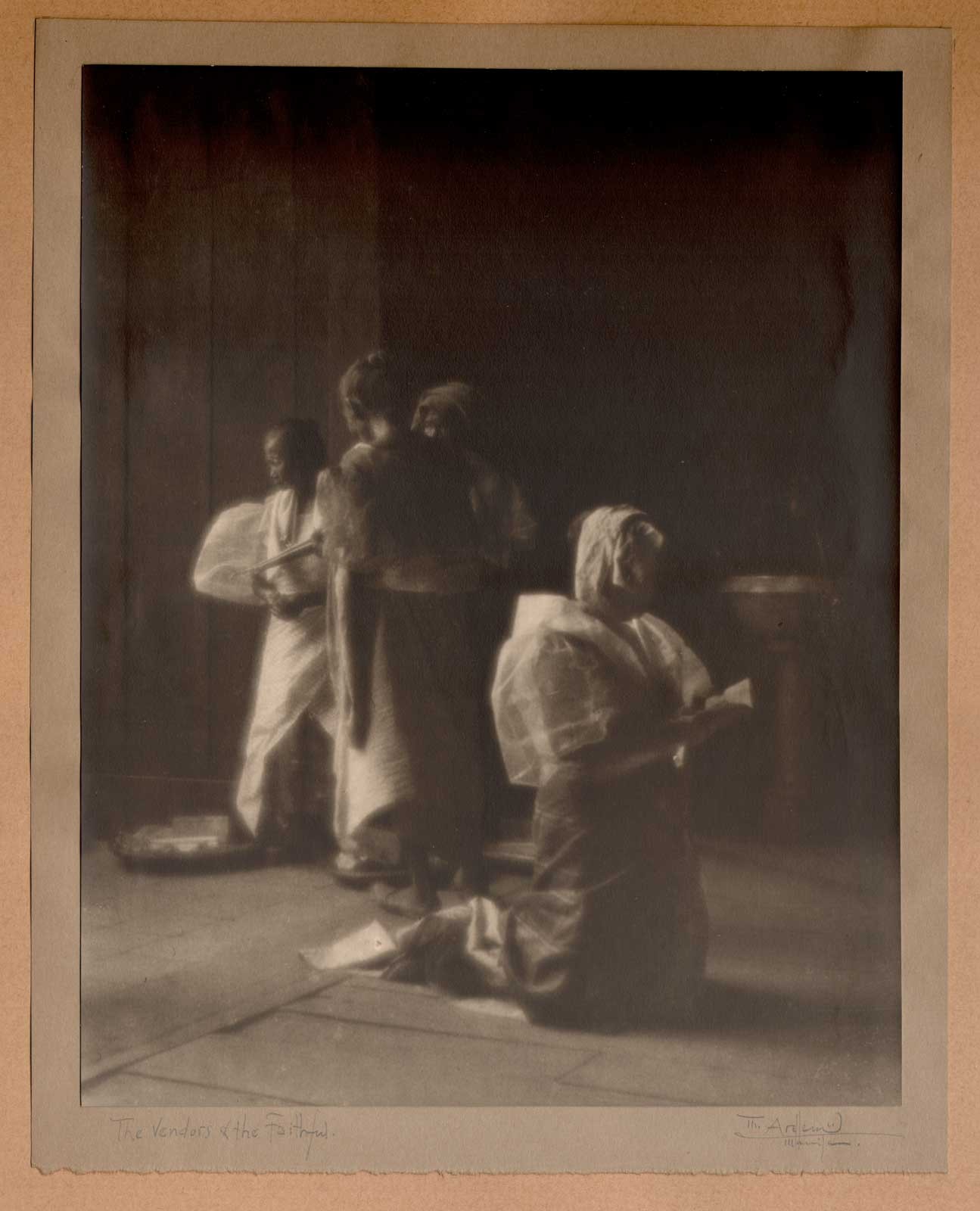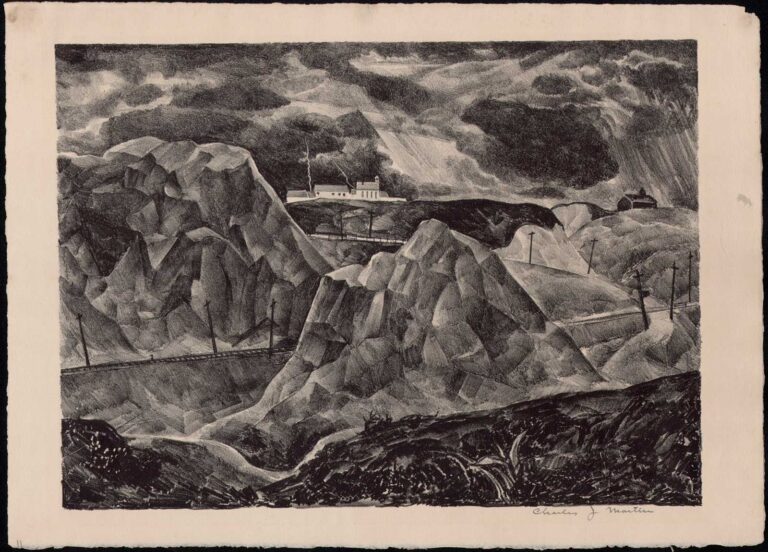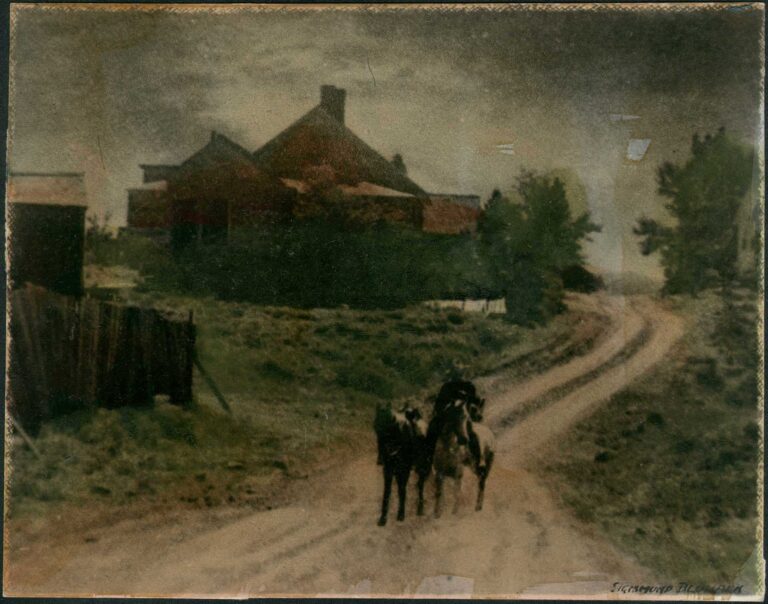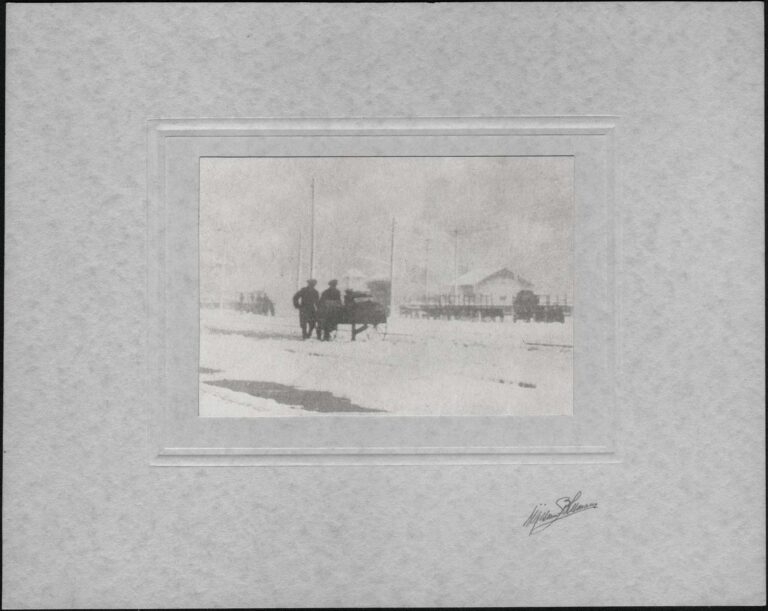
The Vendors & the Faithful
Wearing a traditional short-sleeved Camisa blouse, a woman devout in her faith kneels and prays inside a church while vendors stand behind her with wares for sale. These would most likely include rosaries, religious pamphlets and small religious icons such as the Black Nazarene, should the location of the photograph be the Minor Basilica of the Black Nazarene (Quiapo Church) fronting Plaza Miranda in Manila, perhaps the most important symbol of Roman Catholicism in the Philippines. Further research for the location of this photograph may be the former Antipolo Church, now Antipolo Cathedral-rebuilt after the church was destroyed in World War II-please see timeline below.
Timeline: Published references to Manuel Arellano: born 1885
1915: The Official Catalogue of Exhibitors for the Panama-Pacific International Exposition in San Francisco, California lists Arellano along with Vincente Arias. (Group 33)
1917: Business directory listing: Atelier, Arellano-Artistic Photography- Telephone 3434- 162 Escolta, Binondo.: Manuel Arellano, Partner (Arellano Art Studio, Samanillo Building, Escolta) (source: Rosenstock’s Directory of China and Manila, Vol. 23- 1917)
1925: Tipped frontispiece and two plates by Arellano included in volume: Buena Vista: An American View of the Philippine Islands, by John Hudson Poole, Pasadena: Privately Printed, (250 copies) 1925.
1928: Short biography of the photographer titled: What a “Brownie” Camera Led To:
“One fully entitled to the name of artist, is Mr. Manuel Arellano, brother of Juan. Manuel was born in Manila in 1885. In 1900 he received the degree of A. B. from the Ateneo de Manila, and then, for some strange reason, entered the Nautical School. He graduated as mate, and for several years traveled in the inter-island seas as well as touching at various ports in China and Indo-China. He then entered the Civil Service for a number of years. He is now known as Manila’s leading photographer.The only example of his work in the MAGAZINE this year was the photograph of Governor-General Stimson, but some years ago we published a series of his beautiful Manila photographs as inserts to the MAGAZINE. He began his career as a photographer in 1910, with a Brownie camera which belonged to his first wife, Filomena Barreto, who died in 1919. He started with no knowledge of the art, and now says that he did not really master it until 1921, the same year he married Miss Justina Galos, (sic-1923) better known as Galia Arellano, Manila’s leading dramatic soprano. His present beautiful studio is on the top floor of the Perez Samanillo building on the Escolta. He is a musician as well as an artist, and plays the piano. His knowledge of music has made him a recognized musical critic, and some years ago he was selected by Dr. Alexander Lippay, Director of the Conservatory of Music of the University of the Philippines, to be his assistant in the reorganization of that school.” (source: Philippine Education Magazine, vol. 25, p. 625)
1935: August: “On the cover of this month’s issue of the Philippine Magazine is reproduced a photograph by Mr. Manuel Arellano, noted Manila artist photographer. He is the brother of Juan Arellano, the architect, and his wife, Galia de Arellano, is an opera singer. Mr. Arellano himself is a sound musical critic.” (notes: cover photo is titled “Planting Rice”, showing a farmer trailing behind a water buffalo in the field. Another plate in the issue is titled “Moored on the Banks of the Pasig”. Both photographs taken in the soft-focus pictorialist style. (p. 410)
– November: At some point, Manuel Arellano is believed to have been named official photographer to Manuel L. Quezon, first president of the Commonwealth of the Philippines, who was inaugurated in Manila on the 15th of November. In preparation, the November issue of Philippine Magazine reproduced full-page photographs credited to the photographer of Quezon as well as First Vice-President Sergio Osmeña.
1946: Mention of the photographer’s continued work at around 61 years of age: “Another branch of art growing rapidly in the Philippines, as in the United States, is photography. Manuel Arellano is the Filipino leader of this art of taking artistic photographs. His work is known all over the archipelago. Many of his pictures have been shown in London and New York. Some of his photographs are like the engravings of old masters.” (source: The Philippines, By Donn V. Hart & Howard E. Wilson: American Book Company: 1946, p. 188.)
1978: Photographer mention: “The Denniston’s Photo Contest of 1925 gave prizes to photographs of landscapes, Quiapo Church beggars and beautiful Filipinas in their native costumes. The tranquil, native scenes by Manuel Arellano on the covers of the Sunday Tribune (Manila-editor) showed an age in conflict. His March 31, 1925, photograph of the Antipolo Church was captioned to bring attention to the unsettling atmosphere and the longing for the past that characterized the 1920’s: “Antipolo Shrine…it is things like this that cannot die, because the faith must outlive the temple.” (source: Filipino Heritage: The Making of a Nation, by Alfred R. Roces: Manila: Lahing Pilipino Pub., p. 2380)
2000: Modern reference: ARELLANO, Manuel /b. Mla 1885. (Watercolors) Studied at the Ateneo de Mla where he finished his Bachelor of Arts degree. Traveled extensively in Europe. Reputation based largely on his being a photographer and a fine watercolorist. (source: Kayumangi: Biographies of Philippine Visual Artists, p. 9.
Print notes, Recto: Signed by the artist in graphite at lower left within primary mount: The Vendors & the Faithful.; signed at lower right of mount: M. Arellano Manila.
Provenance: Acquired by PhotoSeed in June, 2020 from a Vermont print dealer who purchased it at Brimfield, MA roughly ten years prior.



